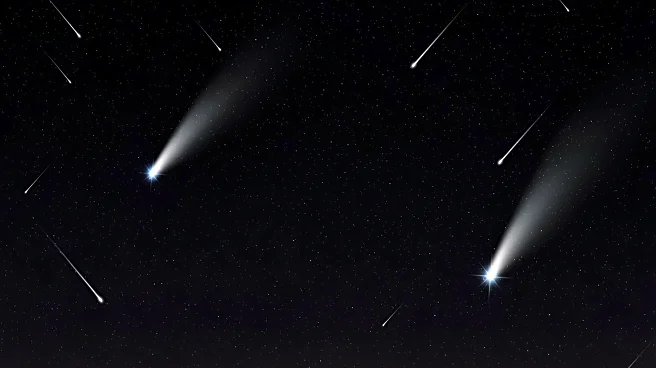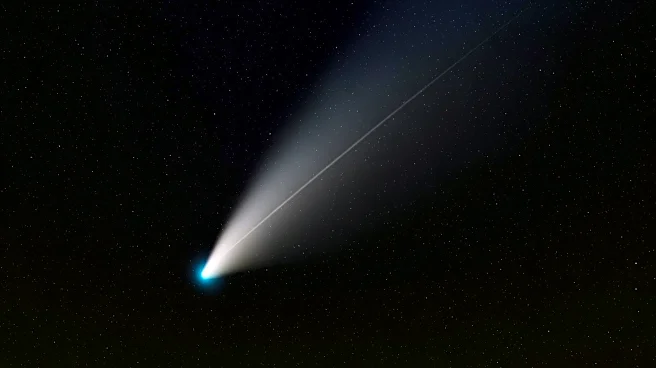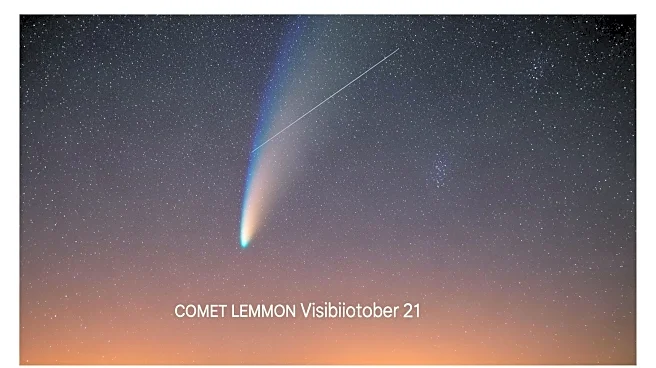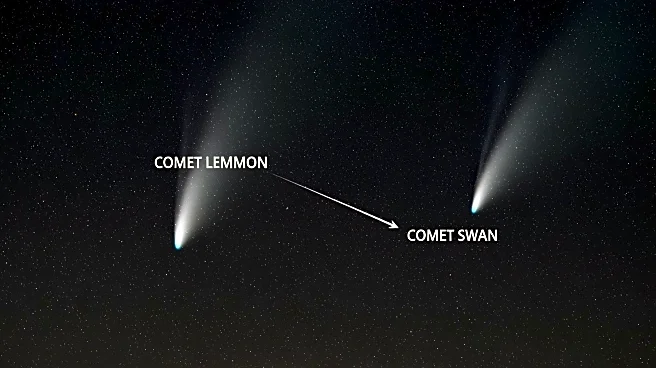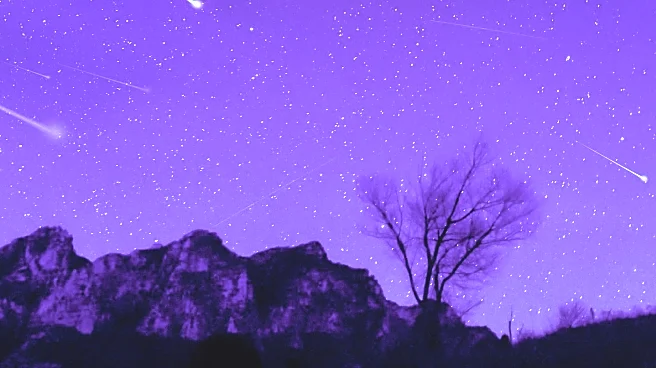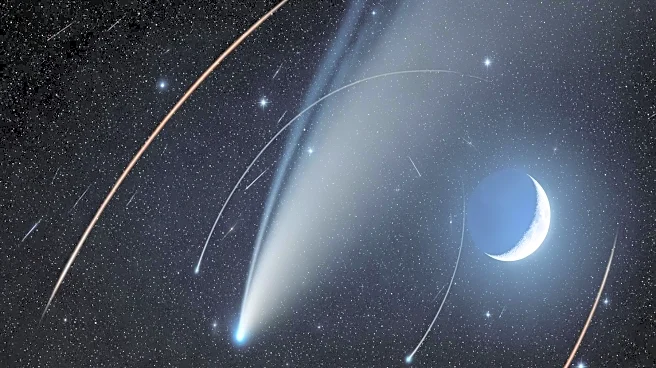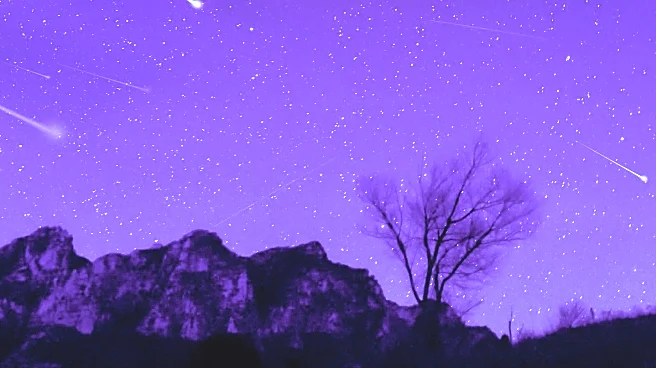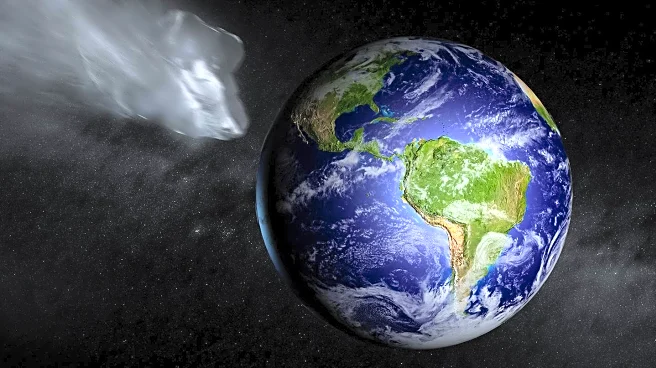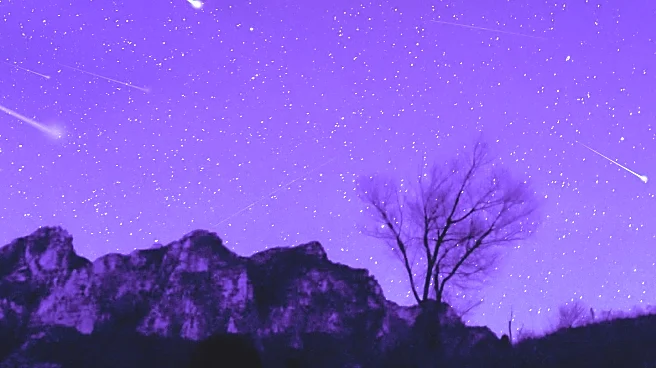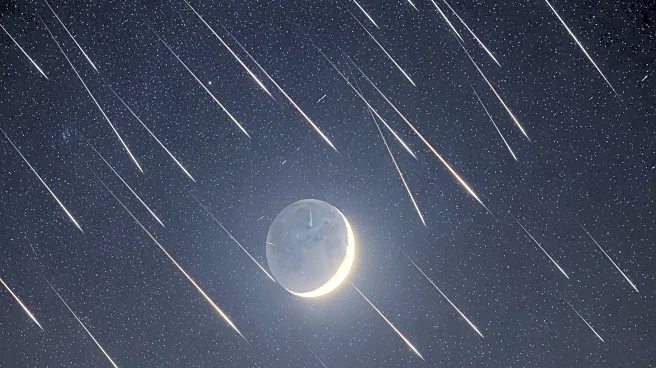What's Happening?
The Orionids meteor shower, known for its fast-moving meteors, is set to peak this week, offering a spectacular celestial display. This event coincides with the appearance of two comets, Lemmon and SWAN, in the night sky. The Orionids, which originate
from debris left by Halley's Comet, will be most visible in the early morning hours of October 21, with up to 20 meteors per hour expected. The shower will continue through November 22, although the frequency of meteors will decrease over time. The current new moon phase ensures darker skies, enhancing visibility. Comet Lemmon, discovered in January, will be visible in the northwest near the Big Dipper, while Comet SWAN, spotted in September, will appear in the southern sky near the star Altai. Observers are advised to find dark locations and use binoculars for optimal viewing.
Why It's Important?
The Orionids meteor shower and the visibility of two comets provide a unique opportunity for astronomers and skywatchers to observe celestial phenomena. This event highlights the ongoing interest in space exploration and the study of comets, which can offer insights into the solar system's formation and evolution. The dark skies due to the new moon phase enhance the viewing experience, making it an ideal time for educational and recreational activities related to astronomy. The presence of comets Lemmon and SWAN adds to the excitement, as comets are relatively rare and can provide valuable data for scientific research.
What's Next?
As the Orionids meteor shower continues through November 22, skywatchers can expect a gradual decrease in meteor activity. The visibility of comets Lemmon and SWAN will depend on weather conditions and light pollution, with optimal viewing occurring in dark areas. Astronomers and enthusiasts may continue to monitor these comets for any changes in brightness or trajectory. The event may also inspire educational programs and public interest in astronomy, potentially leading to increased participation in stargazing activities and discussions about space exploration.
Beyond the Headlines
The appearance of comets Lemmon and SWAN alongside the Orionids meteor shower underscores the dynamic nature of our solar system. Comets, often considered remnants from the solar system's formation, can provide clues about the early conditions of the solar system. This event may prompt discussions about the importance of preserving dark skies for astronomical observations, as light pollution can significantly impact visibility. Additionally, the event highlights the role of observatories and space agencies in tracking and studying celestial objects, contributing to our understanding of the universe.
